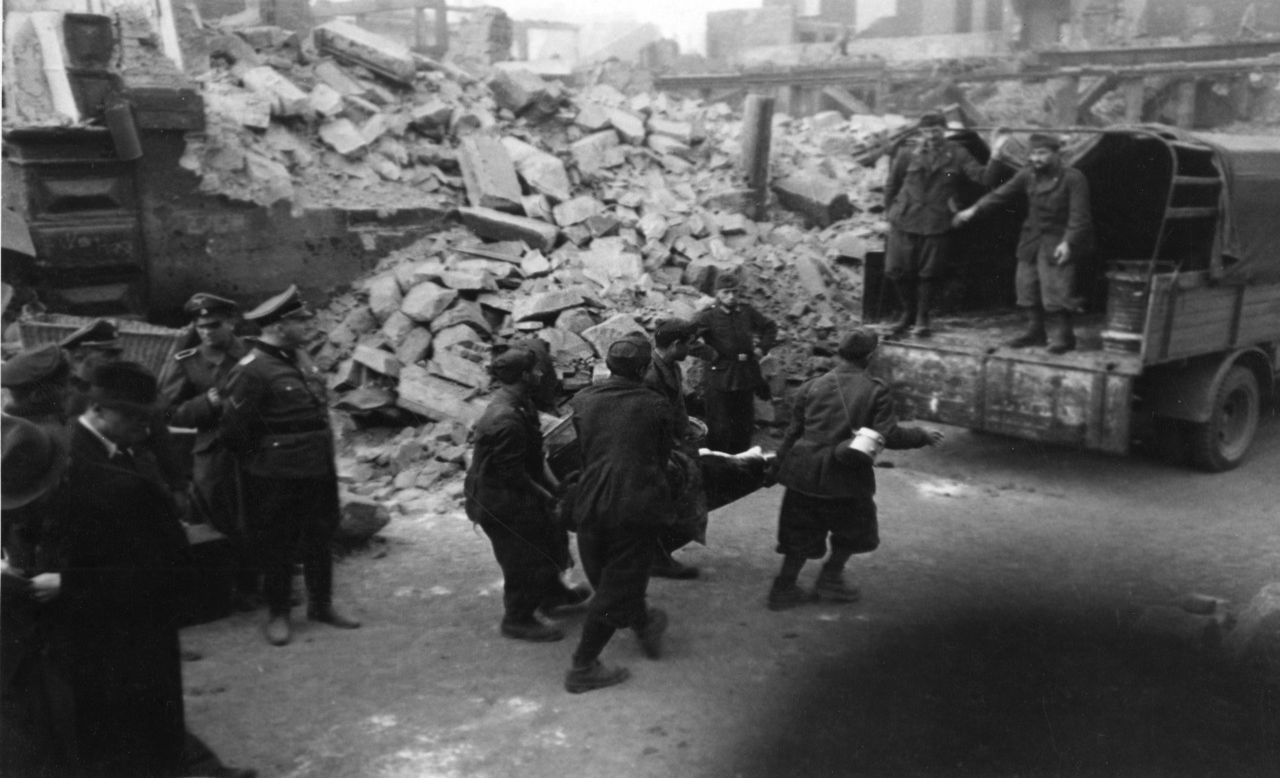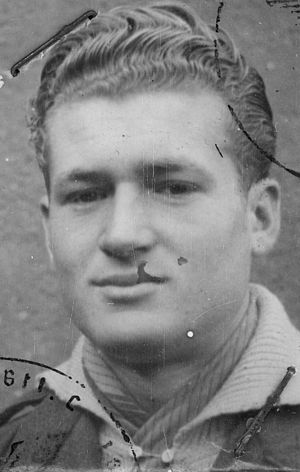
Forced labor of the soldiers for the war
The Wehrmacht divided the Italians into more than 60 main camps (Stalag) in the German Reich and in occupied Poland. Hundreds of thousands of workers were thus available to the National Socialist regime. These were urgently needed in the war economy. Hitler declared the captured Italians to be "military internees". He thus circumvented the prohibition under international law to use prisoners of war in arms production.
From the end of 1943, more than 450,000 soldiers and non-commissioned officers mostly worked for armaments, in mining and in the construction industry. Officially, the Wehrmacht remained responsible for the military internees. But the companies also had an increasing influence on their living conditions. Inadequate food and severe penalties were the rule in the stalag and the companies. About 25,000 Italians died by the end of the war.
„... dead tired we came on an open field to a track construction site. ... We replaced wooden sleepers with steel sleepers. Hard work, and the whole day in the cold. At noon on the first day we hoped from Esse, but unfortunately there was nothing.“
Renzo Roncarolo, 1986
Prisoners of war or military internees?

After the armistice of 8 September 1943, the Wehrmacht occupied the Italian mainland. The Italian military were initially considered prisoners of war. At the end of September the fascist Repubblica Sociale Italiana (RSI) was founded. The satellite state, limited to northern and central Italy, remained an ally of the German Reich under Mussolini's leadership until the end of the war. However, military members of an allied state could not be prisoners of war. Therefore Hitler changed their status at the end of September 1943 and declared them military internees.
What was the difference between prisoners of war and military internees?
Prisoners of war were military prisoners of an enemy state. Military internees, on the other hand, were interned military personnel of an allied state.
What reasons did the National Socialist regime have for the change of status?
The change took place out of consideration for Mussolini's friendly regime. As "military internees", the Italians could also be deployed immediately in German arms production. This was forbidden for prisoners of war under international law.
What consequences did the change of status have for the captured Italians?
The ordinary soldiers were immediately called upon to work in armaments production. The support prescribed for prisoners of war by the International Red Cross - food parcels, medicines and control visits - was dropped.
Collaboration or refusal?

The majority of the prisoners were asked whether they wanted to continue fighting in the Wehrmacht, the SS or in Mussolini's new units. The National Socialists wanted to use the military internees primarily as forced laborers. In addition, they were to be recruited for service in the Wehrmacht. The Repubblica Sociale Italiana under Mussolini's leadership, on the other hand, planned to build up new armed forces. More than 190,000 prisoners decided to collaborate with Mussolini or Hitler. More than 600,000 refused to cooperate. The result was imprisonment and forced labour.
What were the reasons for "yes" or "no" to collaboration?
Loyalty to the German alliance partner
Fascist attitude
Oath to the Italian King
Hope for better living conditions
Mistrust of the Germans
General war fatigue
Hope of return to Italy
fear of captivity
How were the recruitments conducted?
German and Italian commissions carried out the interviews. They often took place after meal deprivation or long appeals. The "yes-men" were promised better food or even a return to Italy.
What happened to those willing to cooperate?
The majority of the "yes-men" were integrated into the Wehrmacht, the SS or the new fascist army. Most of them were assigned to the Baukommandos of the Wehrmacht and the Organisation Todt. Some remained in the POW camps.

Gruden Giovannini
*1922
Gruden Giovannini was deployed in the POW Building and Work Battalion No. 195 in Berlin. With a pick and shovel, he removed the rubble from bomb-destroyed houses in the city center, repeatedly interrupted by new air raids. In addition, he had to dig graves for war dead.
The baker from Bolzano had been drafted for military service in 1941. The Wehrmacht captured him in Verona in September 1943. He spent two months in the completely overcrowded Stalag III A in Luckenwalde. He got so little to eat there that he picked vegetables in the fields. During the last months of his captivity Gruden Giovannini worked in a factory in Neumarkt near Halle. After the war he returned to Bolzano. He worked as a baker again and ran a sports shop. Giovannini headed the Bolzano office of the Association of Former Military Internees (ANEI).
